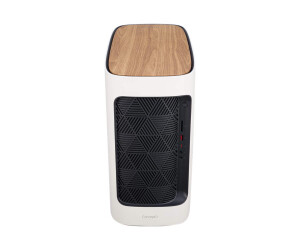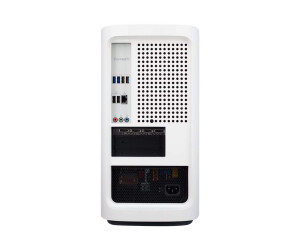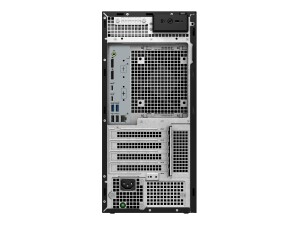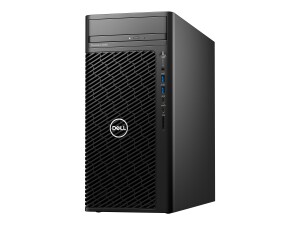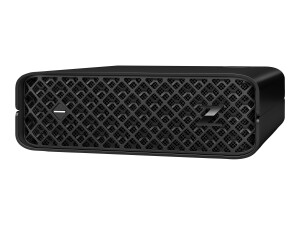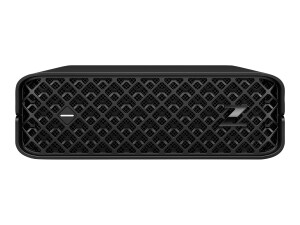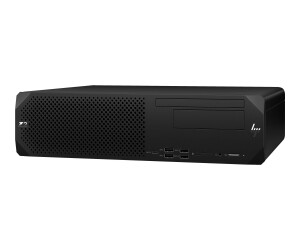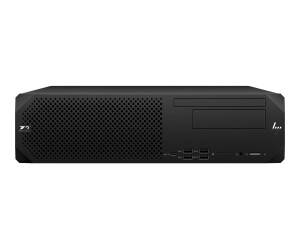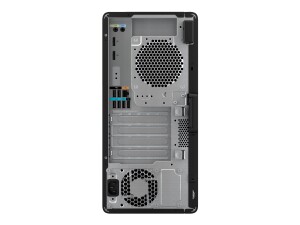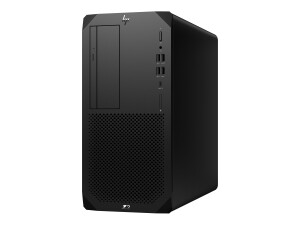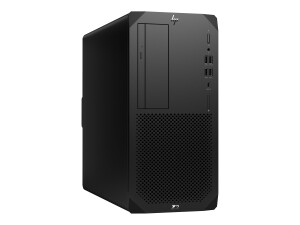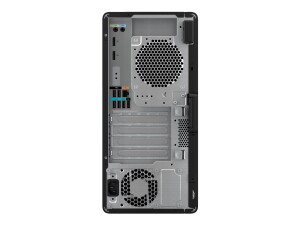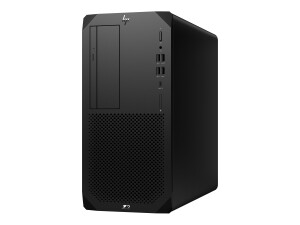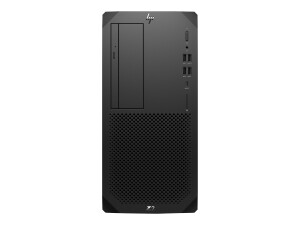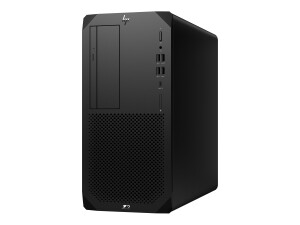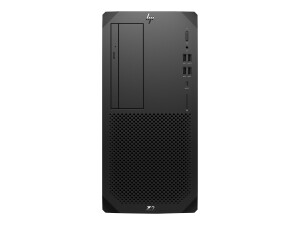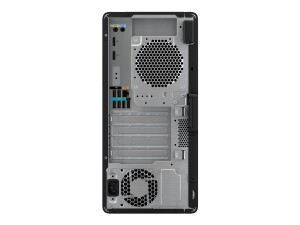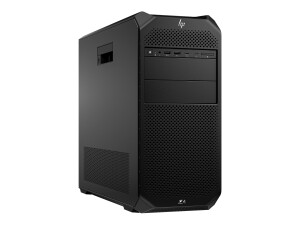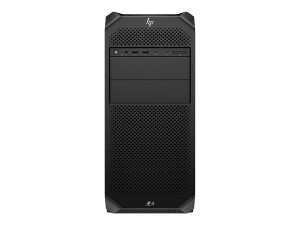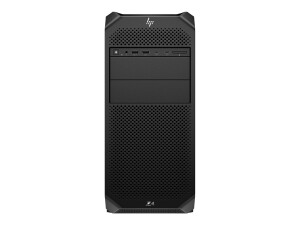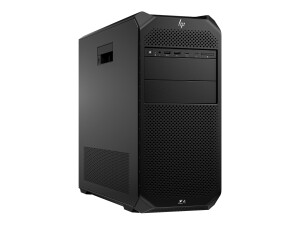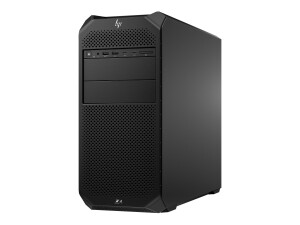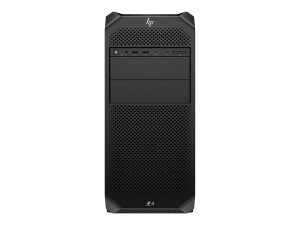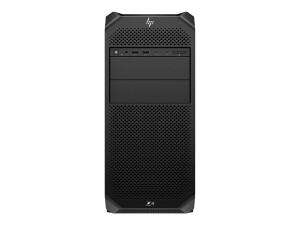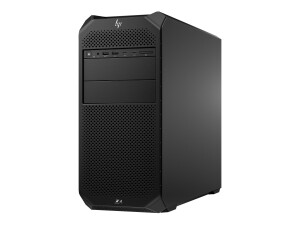- /
- Computersystems
- /
- Workstation
Workstation
Workstation
What are the advantages of used workstations?
Compared to office PCs or home PCs workstations work with higher quality hardware. So in part, one or more processors for the server installed and it will support more memory, which also dominates even more features for error correction. To complement this, the graphics card is a high-quality business model, which is not found in standard PCs. In the field of connectors offers a workstation usually a larger variety. So also the older serial COM port is often standard. For this reason, a workstation is especially suitable when scientific or technical problems occur. Integrated RAID systems, data security, or alternatively acceleration of traffic, are also available and can be retrofitted easily than in conventional PC. Among the other possible extras include several status lights on the front, to display errors. Some models even feature an integrated LCD display, eg the temperature inside display. But the maintenance and administration is facilitated by a simpler installation, which is why many manufacturers, such as in Use server, an externally accessible hard drive cage. Besides the models in the famous tower case, also rack versions are offered. In this working via remote connection and the device is eg with other servers in the well-chilled and safe rack cabinet. In this category you will find new and refurbished workstations known and reputable manufacturer. The refurbished workstations that have been reconditioned by the manufacturer and worked up by us are perfectly adequate and as good as new for everyday use. Due to the high performance of their service life is very long and therefore can no more be operated for several years. So it's worth taking a look at the assortment of workstations to throw.
How can a workstation recognize?
Traditional workstations, such as PA -RISC, MIPS, SPARC, and PowerPC, were replaced by the current technology. They were then used to provide a user or a few other private system with directly connected input devices. So they did not have a device, often share a slow terminal connection, with several other users. The term workstation has undergone a major change over time. Today, it refers to a high-end computer which provides massive computing power and is therefore suitable for large amount of data and complex calculations. The boundaries between workstations and desktop PCs today are hardly any clearly definable as part for advertising purposes pcsysteme also be titled workstation. In the major manufacturers, of which originate and the systems in our range, but this is not so and you can therefore be sure to get a real added value.
A workstation is a powerful and specialized computer designed for use in professional applications such as media production, construction, scientific research, data analysis, and other similar fields. Unlike a typical desktop computer, a workstation is capable of handling complex tasks such as rendering 3D graphics or performing simulations that would be too demanding for ordinary computers.
A workstation typically consists of a combination of hardware and software components tailored to the specific needs of the user. The hardware components may have various features depending on the need, including a powerful CPU, multiple graphics cards, a large amount of memory, RAID systems for data storage, and fast hard drive technology. These components are designed to meet higher performance requirements than are necessary with a conventional desktop PC.
The software components of a workstation may also be tailored specifically to the application area. For example, a workstation used for creating 3D animations may include specialized software for modeling, texturing, animating, and rendering objects and scenes. A workstation used for scientific applications may include software for analyzing large amounts of data, complex mathematical calculations, and simulations.
Workstations are generally more expensive than conventional desktop computers because they are tailored to the specific needs of professionals who have higher demands on their workstations. However, they can offer significantly higher performance and reliability than normal desktop computers. They are also generally easier to expand and upgrade to keep up with the changing needs of users.
Another important feature of workstations is their stability and reliability. They are often used in environments where failures or crashes can be costly or even dangerous. Therefore, workstations are designed with special features such as redundant power supplies and longer lifetimes to ensure the highest possible availability and lower failure rates.
In summary, a workstation is a powerful and specialized computer designed for professional applications such as media production, construction, and scientific research. It offers higher performance and reliability than conventional desktop computers and is specifically tailored to the requirements of professionals who must handle complex tasks. Workstations may be more expensive than desktop computers, but they offer higher performance and reliability that are essential for professional applications.
There are different types of workstations designed for various applications.
CAD Workstations:
CAD workstations are specifically designed to meet the demands of engineers, architects, designers, and other professionals working with 3D modeling and construction projects. These workstations offer high performance, reliability, and precision to meet the demands of demanding CAD applications.
One of the most important components of a CAD workstation is the CPU. The CPU is the heart of the workstation and processes the data generated by the software. Since CAD applications are very demanding, they require a high-performance CPU. The higher the clock frequency and number of cores, the faster the CPU can process the data. For CAD applications, CPUs with at least four cores and a clock frequency of at least 3 GHz are recommended.
Another important component of CAD workstations is the graphics card. CAD applications require a special graphics card to visualize 3D models quickly and accurately. A professional graphics card such as Nvidia Quadro or AMD FirePro is specifically designed for CAD applications and offers higher performance than a standard graphics card. They have specialized features such as anti-aliasing, texture filtering, and hardware support for OpenGL and DirectX APIs to enable fast and accurate 3D rendering.
Storage capacity is also important for CAD workstations. CAD applications often create large files that require a lot of storage space. An SSD is ideal for speeding up the loading times of CAD applications and file transfer speeds. A workstation should have at least 16 GB of RAM and a storage capacity of 256 GB or more.
In addition to the hardware components, software requirements for CAD workstations are also important. CAD software such as AutoCAD, SolidWorks, and Inventor require powerful workstations to work quickly and efficiently. There is also specialized CAD software tailored to specific industries such as architecture, engineering, or product design.
Media and Graphics Workstations:
Media and graphics workstations are specifically designed for editing videos, images, animations, and other media. They offer high performance and reliability to effectively execute demanding applications such as Adobe Photoshop, Illustrator, Premiere Pro, and After Effects.
One of the most important components of a media and graphics workstation is the CPU. The faster the CPU is, the faster the workstation can process and edit large files. A CPU with at least four cores and a clock frequency of at least 3 GHz is required for media editing. Many media and graphics workstations even have more powerful CPUs with six or eight cores.
Another important component for media and graphics workstations are graphics cards. A powerful graphics card is essential for media editing as it provides the ability to support multiple screens and enhance the display of visually appealing content. Media and graphics workstations typically have multiple professional graphics cards such as Nvidia Quadro or AMD FirePro. These graphics cards are specifically designed for demanding applications such as editing 4K or 8K videos and creating 3D animations.
Storage capacity is also important for media and graphics workstations. Large media and graphic files can quickly take up a lot of storage space. Therefore, it is advisable to choose a workstation with a large SSD hard drive or a RAID configuration. A workstation should have at least 16 GB of RAM and a storage capacity of 512 GB or more.
In addition to hardware, software is also an important factor in selecting a media and graphics workstation. A workstation should be equipped with the latest versions of software applications such as Adobe Creative Suite or Final Cut Pro X to ensure smooth media editing. It is also advisable to keep an eye on software updates and hardware upgrades to ensure that the workstation is always up to date with the latest technology. Overall, media and graphics workstations offer the performance, precision, and reliability required to carry out complex and demanding media projects. The combination of powerful hardware and specialized software allows users to work quickly and efficiently and achieve high-quality results.
Scientific Workstations:
Scientific workstations are typically used by researchers and scientists who need to perform complex mathematical calculations, data analysis, and simulations. These workstations are designed to provide high performance and efficiency to meet the demands of these demanding applications.
One of the most important components of a scientific workstation is the CPU. The faster the CPU is, the faster the workstation can perform complex mathematical calculations. A CPU with multiple cores and a high clock speed is necessary for most scientific applications. Many scientific workstations even have more powerful CPUs with more than 10 cores to improve performance in parallel calculations.
Another important factor for scientific workstations is memory (RAM). Large memory allows the workstation to perform multiple processes and calculations simultaneously without compromising performance. Scientific workstations should have at least 32 GB of RAM to ensure optimal performance in data analysis and simulations.
Scientific workstations also require high storage capacity to store and process large amounts of data. An SSD hard drive with at least 1 TB of storage capacity is necessary for most applications. Some applications, such as machine learning or deep learning, may require even larger storage capacities to process large datasets.
A powerful graphics card is also necessary for many scientific applications. It is needed to create complex visualizations and process data in real-time. Scientific workstations can be equipped with specialized graphics cards designed for parallel computing that can accelerate calculations.
In addition to the components mentioned above, software applications are also important for scientific workstations. Most scientific applications require specialized software tailored to the specific requirements of the application. Examples of such applications include MATLAB, R, Python, and other scientific tools.
Financial Workstations:Financial workstations are primarily used by professional investors and finance experts who specialize in complex financial data analysis and trading strategies. These workstations must provide high performance, speed, and accuracy to meet the demands of these demanding applications.
One of the most important components of a financial workstation is the CPU. It should be fast and powerful to execute the fastest and most demanding trading strategies. A CPU with multiple cores and high clock speed is necessary for most applications. Some professional investors and finance experts also prefer specialized CPUs designed for trading to further improve the efficiency and speed of the workstation.
A high storage capacity is also important for financial workstations to store and process large amounts of data. An SSD hard drive with at least 1 TB of storage capacity is necessary for most applications. Some applications such as high-frequency trading may require even larger storage capacities to process large amounts of data in real-time.
A powerful graphics card is usually not as important for financial workstations as the applications they use typically rely on CPU performance and specialized software. However, a dedicated graphics card designed specifically for financial applications, such as calculating risk management models, can improve the performance and efficiency of the workstation.
Software applications are an important component of financial workstations. Most applications require specialized financial software tailored to the specific requirements of the application. Examples of such applications include Bloomberg, Reuters Eikon, Fidessa, and other specialized financial software. This software enables investors and finance experts to monitor financial data in real-time, develop trading strategies, and perform complex financial analysis.
In addition to the components mentioned above, financial workstations must also provide security features to ensure the confidentiality and integrity of financial data. They must be able to establish secure network connections and ensure protection against cyber attacks.
Gaming Workstations:Gaming workstations are designed specifically for gamers and enthusiasts who are looking for the best possible gaming experience. They feature powerful CPUs, fast graphics cards, and large storage capacity to enable fast and smooth gaming. Gaming workstations are often equipped with specialized cooling systems to ensure stable performance during long gaming sessions.
The CPU in a gaming workstation is often a high-performance processor that enables fast and responsive gaming. Processors from the Intel Core i7 or i9 series or AMD Ryzen series are often used because they offer high performance with low power consumption. Depending on the budget, more powerful processors such as the Intel Core i9 Extreme series or AMD Threadripper series can also be used to achieve even higher performance.
A fast graphics card is another important feature of gaming workstations. A fast graphics card enables fast and smooth rendering of images and ensures that gameplay does not stutter or lag. Gaming workstations can be equipped with a single graphics card or with multiple graphics cards working together in SLI or Crossfire configurations. One of the most well-known graphics card series for gaming workstations is the NVIDIA GeForce series, but AMD Radeon graphics cards also offer excellent performance.
In addition to the CPU and graphics card, gaming workstations often have large storage capacity to store games and other files. It is not uncommon for gaming workstations to be equipped with multiple hard drives or a fast solid-state drive (SSD) to ensure fast loading times and provide space for large game files.
Another important factor in gaming workstations is the cooling system. Gaming workstations often require specialized cooling systems to ensure stable performance during long gaming sessions. Most gaming workstations feature powerful fans or even water cooling systems that can effectively dissipate heat.
Virtual Reality Workstations:Virtual reality workstations are designed specifically for the creation and display of virtual worlds and simulations. These workstations feature powerful graphics cards and processors to enable fast and realistic rendering of 3D environments. They are designed for use with virtual reality headsets such as Oculus Rift, HTC Vive, or Windows Mixed Reality.
To enable a smooth and realistic virtual reality experience, virtual reality workstations require powerful graphics cards that are capable of meeting the high demands of virtual reality technology. These graphics cards must be able to render 3D objects quickly and smoothly and send high-resolution images with a high frame rate to the VR headset.
The CPUs in virtual reality workstations must also be very powerful to meet the high demands of VR software and applications. The processors must work quickly and be able to execute a high number of parallel processes simultaneously to ensure a smooth and immersive VR experience.
In addition to powerful graphics cards and CPUs, Virtual Reality workstations also require a lot of storage space to store large VR projects and applications. A fast hard drive or SSD is also important for quickly loading and saving data.
Server workstations are specialized for managing servers and networks. These workstations have powerful CPUs and storage capacity to enable fast and efficient processing of network traffic and data processing. They are used by system administrators and IT experts to manage and optimize servers, databases, and networks.
Server workstations are equipped with a variety of features and tools to facilitate server management. These include remote management tools that allow administrators to manage and monitor servers and networks from remote locations. Additionally, server workstations often have redundancy and fail-safe features to ensure that servers and networks remain reliable even in the event of failures or disruptions.
Storage capacity is also an important aspect of server workstations. These workstations have multiple hard drives or SSDs that can be mounted either internally or externally to provide enough storage space for data processing and storage. Server workstations are also equipped with multiple network ports to enable fast and efficient data transfer.
Audio workstations:
Audio workstations are computers specifically designed for processing audio recordings and productions. They are equipped with powerful hardware and specialized software tools that enable high audio quality and efficient processing.
One of the most important components of an audio workstation is the audio interface, which allows external audio sources such as microphones or instruments to be connected to the computer and make digital audio recordings. The quality of the audio interface plays a crucial role in audio recording and playback and ultimately affects sound quality.
Another important component of an audio workstation is the CPU. A fast and powerful CPU is required to ensure real-time processing of audio streams and perform complex calculations. It is also important that the CPU has enough cores and threads to enable efficient parallel processing.
Specialized audio workstations often also have specialized sound cards and DSP (Digital Signal Processing) chipsets that enable precise audio processing and editing. These sound cards often have a higher sampling rate and higher bit depth than standard sound cards to ensure better audio quality.
The software on audio workstations is often tailored to the needs of audio experts and includes specialized audio editors, DAWs (Digital Audio Workstations), and plugins. These software tools allow for editing of audio recordings and productions at various levels, from recording and editing audio clips to creating complex music arrangements.
Audio workstations are used by a variety of audio experts, such as music producers, sound engineers, sound designers, and composers. They are also used in the film industry to create and edit soundtracks for movies and TV shows.
Security workstations:
Security workstations, also known as penetration testing workstations, are specifically designed for conducting security analyses and tests. They have specialized software and hardware components to identify and fix vulnerabilities in systems and networks. Penetration testers use these workstations to identify potential attack vectors and increase the security level of networks, systems, and applications.
Security workstations are typically equipped with specialized tools and applications used for scanning, testing, and manipulating networks and systems. Some of the key tools and applications used on these workstations include:
Vulnerability scanners: Vulnerability scanners are tools that look for weaknesses in networks and systems. These tools conduct automated tests to identify potential vulnerabilities.
Exploit frameworks: Exploit frameworks are collections of tools used for testing vulnerabilities and exploiting weaknesses in networks and systems. These frameworks contain a range of exploits targeting specific weaknesses.
Sniffers: Sniffers are tools that intercept and analyze network traffic. These tools can be used to capture passwords and other confidential information.
Reverse engineering tools: Reverse engineering tools are used to analyze software applications and understand how they work. These tools can be used to identify and fix vulnerabilities in applications.
Security workstations are usually equipped with powerful CPUs, lots of RAM, and fast storage devices to enable fast and effective testing and analysis. These workstations are often run in virtual environments to increase security and ensure isolation of testing environments.
Security workstations are used by security experts and penetration testers in various industries, including IT security, financial services, healthcare, and government. By conducting security analyses and tests, companies can identify and fix vulnerabilities before they can be exploited by hackers to cause damage.
AI and machine learning workstations:
AI and machine learning workstations have been specifically designed for the application of artificial intelligence and machine learning. They are equipped with powerful CPUs, GPUs (Graphical Processing Units), and high storage capacity to perform complex calculations and processing of large amounts of data.
The processing of data in artificial intelligence and machine learning is very computationally intensive and requires enormous resources. Therefore, these workstations are designed to provide sufficient resources. An example of the use of AI and machine learning workstations is the analysis of large amounts of data to predict future events.
AI and machine learning workstations are used by data scientists, machine learning engineers, and other experts involved in the development of artificial intelligence and machine learning. They are also used by researchers and scientists in fields such as genomics and medicine to perform complex analyses and automate processes.
The hardware components of AI and machine learning workstations are specifically designed to meet the requirements of artificial intelligence and machine learning. For example, they have specialized GPUs that enable parallel processing of large amounts of data, thus accelerating the execution of calculations. Additionally, AI and machine learning workstations can be equipped with specialized software to support the development and testing process of artificial intelligence and machine learning.
Cloud workstations:
Cloud workstations, also known as Virtual Desktop Infrastructure (VDI), are a modern form of workstations that allow users to access their workstation from anywhere by connecting to a cloud-based instance. Unlike traditional workstations, cloud workstations are not tied to a specific physical location and can be accessed from any location over the internet.
These workstations provide a flexible, scalable, and secure working environment and are used by remote workers and companies that require a fast and secure working environment. They can be used by individuals, teams, or entire companies and offer numerous advantages over traditional workstations.
One of the main advantages of cloud workstations is that they provide a flexible working environment that can be customized to the user's needs. Being hosted in the cloud, they can be quickly and easily scaled to adapt to changing requirements. Users can add additional resources when needed, and they can also be easily reduced when no longer needed. This means that companies pay for the resources they need and can avoid wasting resources that are not used.
Another advantage of cloud workstations is that they provide higher security. Data is kept in a centralized and secure environment, minimizing the risk of data loss or theft. The risk of hacking or cyber threats is also minimized, as the workstation is hosted in the cloud and not directly connected to the internet.
Cloud workstations also offer higher mobility and flexibility than traditional workstations. Since users can access their workstations from anywhere, they can work from anywhere with an internet connection. This makes it easier for remote workers who are not in the office or for teams located across different locations to collaborate.
Another advantage of cloud workstations is easy maintenance and management. Since all data is stored in the cloud, users do not have to manage physical resources such as servers or storage devices. This means that companies can save time and money by focusing on the maintenance and management of software and data instead of having to manage physical resources.
Cloud workstations are also capable of supporting a variety of applications and software programs, including those that run on operating systems other than the user's. This allows companies to use a wider range of applications and interact with other companies and industries.
Important characteristics that make a good workstation
Performance:
Performance is one of the most important characteristics of a good workstation. To perform complex tasks quickly and efficiently, a workstation requires a powerful CPU, GPU, and plenty of RAM. A powerful CPU allows the workstation to process data quickly, while a powerful GPU enables fast rendering of 3D graphics, videos, and images.
RAM, also known as memory, also plays an important role. The more RAM a workstation has, the more data it can process at once, increasing work speed and reducing wait times. Particularly when working with large files such as videos or performing complex simulations, ample RAM is essential.
However, the performance of a workstation is not only determined by its hardware. The software running on the workstation can also have a significant impact. Well-optimized software specifically developed for use on workstations can enhance hardware performance and increase productivity.
A good workstation should also have sufficient cooling to avoid overheating. High temperatures can impair hardware performance and, in the worst-case scenario, cause damage. Therefore, a workstation should have effective cooling to ensure optimal performance.
Reliability:
Reliability is an important factor for many users, particularly those who work long hours or perform important and sensitive tasks. A reliable workstation should be stable and robust, and should not overheat or crash even during intensive use over an extended period of time.
An important factor in the reliability of a workstation is the quality of its components. A high-quality workstation should consist of high-quality components known for their durability and reliability. This applies not only to the CPU and GPU but also to the RAM, hard drive or SSD, and power supply.
It is also important that the workstation has adequate cooling systems to avoid overheating. Most modern workstations have powerful fans or water cooling to effectively dissipate heat. This is particularly important for applications that require a lot of computing power, such as video editing or 3D modeling.
Another factor affecting the reliability of a workstation is the operating system and programs installed on it. A stable operating system such as Windows or Linux can help avoid crashes. It is also important that the programs installed on the workstation are well-optimized and stable to avoid unexpected errors or crashes.
In addition, good maintenance and care can help increase the reliability of the workstation. This includes regular updates to the operating system and drivers, checks of hardware components such as the hard drive or SSD, and cleaning of fans or other cooling systems to ensure optimal cooling.
Storage capacity:
A good workstation should have sufficient storage capacity to meet the storage requirements of applications and files. Storage capacity is usually measured in gigabytes (GB) or terabytes (TB).
For workstations used for editing large files such as videos, images, or 3D models, sufficient storage capacity is crucial. Such files can be very large, which means that a workstation should have enough storage space to store and process them without causing delays or storage issues.
A good workstation should also have a fast hard drive or solid-state drive (SSD) to speed up access to files and applications. A fast hard drive or SSD can also help improve the performance of applications as data can be read from and written to the hard drive more quickly.
There are also workstations that have multiple hard drives or SSDs arranged in a RAID configuration. This can improve performance and increase reliability as data can be distributed across multiple hard drives to provide a higher level of redundancy and data security.
It is important that the workstation has enough storage space for the operating system and other important programs to ensure a smooth and fast working environment. If the available storage space runs low, this can cause the workstation to work slower or even crash. A good workstation should therefore always have sufficient storage space to meet the requirements of applications and users.
Expandability:
Expandability is an important feature of a good workstation as it allows the user to adjust the performance and features of the workstation to their changing requirements. An expandable workstation should have multiple slots and connectors to add additional hardware components such as graphics cards, memory, or peripheral devices.
An important aspect of expandability is the ability to easily upgrade or replace the hardware components of the workstation. For example, the user can upgrade the CPU or GPU to a more powerful version or expand the memory to improve performance. A good workstation should also have a modular design that allows the user to remove or add individual components without having to replace the entire system.
The expandability of a workstation also depends on the availability of drivers and software updates. A good workstation should receive regular updates and driver downloads from its manufacturer to ensure that the latest hardware components are supported and system performance is optimized.
An expandable workstation offers the user flexibility and adaptability to meet their requirements over time and maximize their investment in the workstation.
Advantages and disadvantages of workstations:
Advantages:
- Performance: Workstations offer higher performance compared to normal desktop PCs or laptops, as they are optimized for demanding tasks such as video editing, 3D modeling, data analysis, or machine learning.
- Reliability: Workstations are designed for reliability and provide a stable and robust work environment that does not overheat or crash even during long working processes.
- Storage: Workstations provide sufficient storage space for large files to be stored and processed. This is particularly important for industries such as graphic design, architecture, or film production, where large files need to be edited.
- Expandability: Workstations often offer high expandability, which means they can be easily upgraded to meet the user's requirements. This can reduce costs over time, as upgrades are often more cost-effective than buying a new system.
Disadvantages:
- Cost: Workstations are usually more expensive than conventional desktop PCs or laptops, as they are designed for demanding tasks and contain high-quality components.
- Size and weight: Workstations are usually larger and heavier than conventional desktop PCs or laptops, making them less mobile and harder to transport.
- Power consumption: Workstations often consume more power than conventional desktop PCs or laptops, as they contain high-performance components. This can lead to higher electricity bills.
- Noise: Workstations can be louder than conventional desktop PCs or laptops due to their high-performance components. This can be disturbing, especially in environments where a quiet work environment is required.
In summary, there are many different types of workstations that are specifically tailored to different application areas and user groups. A good workstation should have powerful hardware and software components that meet the specific requirements of the application area. A powerful CPU and GPU, plenty of RAM, and effective cooling are essential for performing complex tasks quickly and efficiently.
CAD workstations provide the performance, precision, and reliability necessary to carry out complex design and modeling projects. Scientific workstations offer the high performance, reliability, and efficiency required for conducting scientific simulations and data analysis. Financial workstations provide the high performance, speed, and accuracy needed for conducting financial analysis and trading activities. Gaming workstations offer high performance and fast processing speeds to enable a smooth gaming experience. Virtual reality workstations are specifically designed for creating and displaying virtual worlds, while server workstations are designed for managing servers and networks.
AI and machine learning workstations are powerful workstations designed for processing large amounts of data and complex calculations in artificial intelligence and machine learning. Cloud workstations offer a flexible, scalable, and secure working environment for businesses and individuals.
Reliability is an important factor that is valued by many users. A reliable workstation should consist of high-quality components, have effective cooling systems, and be well-maintained to avoid unexpected errors or crashes. Overall, workstations offer a wide range of specialized features and tools that allow users to complete their work faster, more efficiently, and more accurately.

